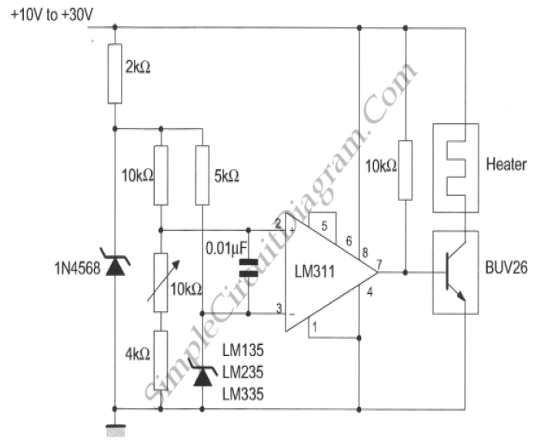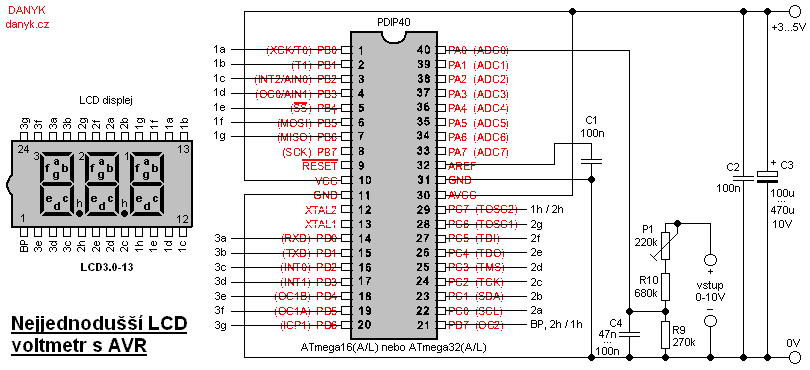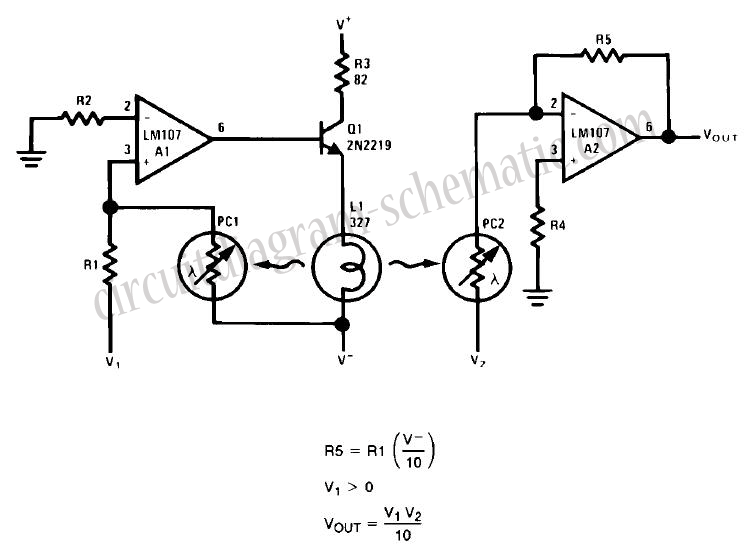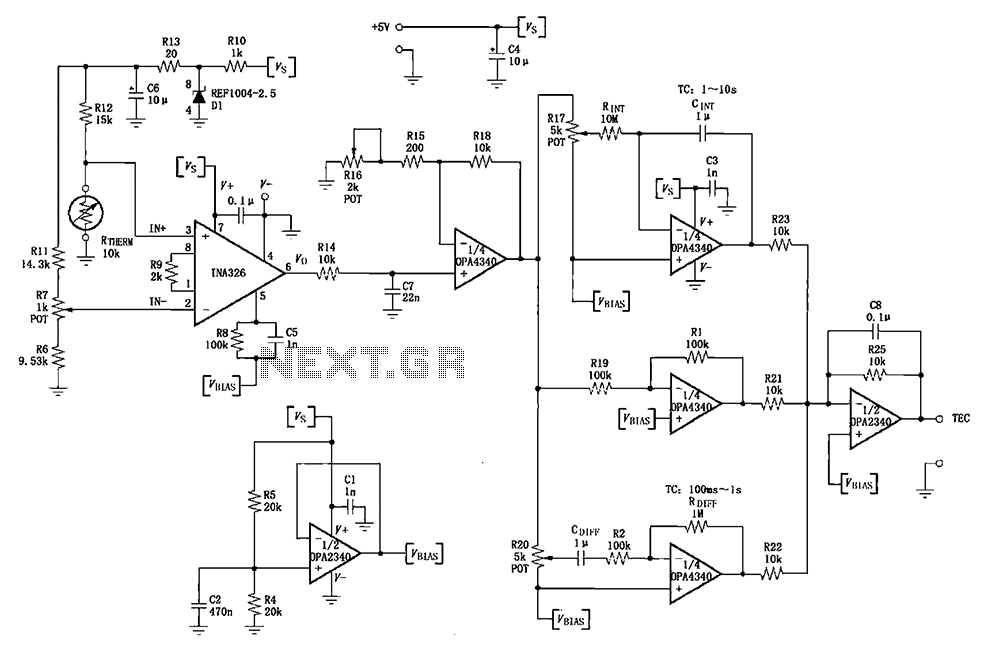
Simple Temperature Controller

This temperature controller utilizes an LM135/235/335 temperature sensor and is designed to maintain a small environment at a warm or hot temperature. A schematic diagram is provided.
The temperature controller circuit is centered around the LM135/235/335 series of temperature sensors, which are precision devices capable of measuring temperature with high accuracy. The LM135, LM235, and LM335 differ primarily in their temperature range and output characteristics, allowing for flexibility in application depending on the specific requirements.
The circuit typically consists of the temperature sensor connected to an operational amplifier (op-amp) configured as a comparator. The op-amp compares the voltage output from the temperature sensor with a reference voltage, which can be adjusted to set the desired temperature threshold. When the temperature falls below this threshold, the op-amp output switches states, activating a relay or a solid-state switch to turn on a heating element.
Additional components may include resistors and capacitors for signal conditioning and stability, ensuring that the op-amp operates correctly within its linear region. A diode may be included for protection against back EMF if an inductive load, such as a relay, is used.
The power supply for the circuit should be stable, providing the necessary voltage for the sensor and the op-amp, typically in the range of 5V to 15V, depending on the configuration. The LM135/235/335 series sensors can operate over a wide range of temperatures, making them suitable for various applications, including greenhouses, incubators, and temperature-controlled storage.
In summary, the temperature controller circuit using the LM135/235/335 temperature sensor offers a reliable solution for maintaining a desired temperature in a controlled environment. The schematic diagram provides a visual representation of the connections and components involved in the circuit, aiding in the implementation and troubleshooting of the design.This temperature controller employs an LM135/235/335 temperature sensor, can be used to keep small environment warm or hot. Here is the schematic diagram:.. 🔗 External reference
The temperature controller circuit is centered around the LM135/235/335 series of temperature sensors, which are precision devices capable of measuring temperature with high accuracy. The LM135, LM235, and LM335 differ primarily in their temperature range and output characteristics, allowing for flexibility in application depending on the specific requirements.
The circuit typically consists of the temperature sensor connected to an operational amplifier (op-amp) configured as a comparator. The op-amp compares the voltage output from the temperature sensor with a reference voltage, which can be adjusted to set the desired temperature threshold. When the temperature falls below this threshold, the op-amp output switches states, activating a relay or a solid-state switch to turn on a heating element.
Additional components may include resistors and capacitors for signal conditioning and stability, ensuring that the op-amp operates correctly within its linear region. A diode may be included for protection against back EMF if an inductive load, such as a relay, is used.
The power supply for the circuit should be stable, providing the necessary voltage for the sensor and the op-amp, typically in the range of 5V to 15V, depending on the configuration. The LM135/235/335 series sensors can operate over a wide range of temperatures, making them suitable for various applications, including greenhouses, incubators, and temperature-controlled storage.
In summary, the temperature controller circuit using the LM135/235/335 temperature sensor offers a reliable solution for maintaining a desired temperature in a controlled environment. The schematic diagram provides a visual representation of the connections and components involved in the circuit, aiding in the implementation and troubleshooting of the design.This temperature controller employs an LM135/235/335 temperature sensor, can be used to keep small environment warm or hot. Here is the schematic diagram:.. 🔗 External reference





